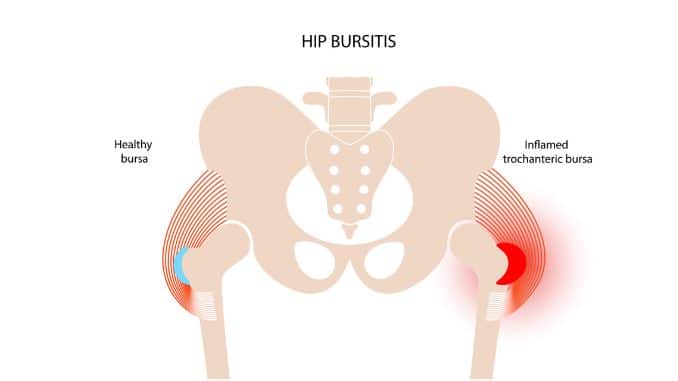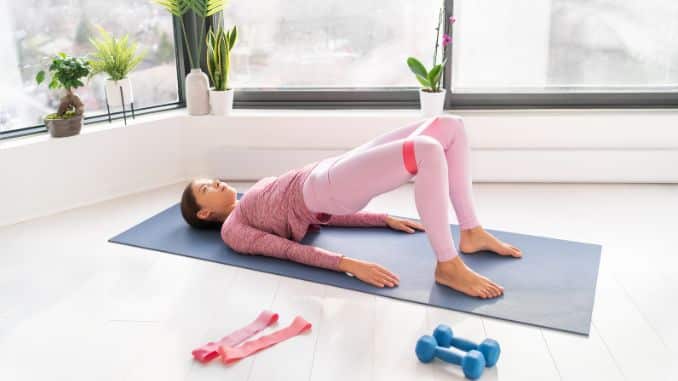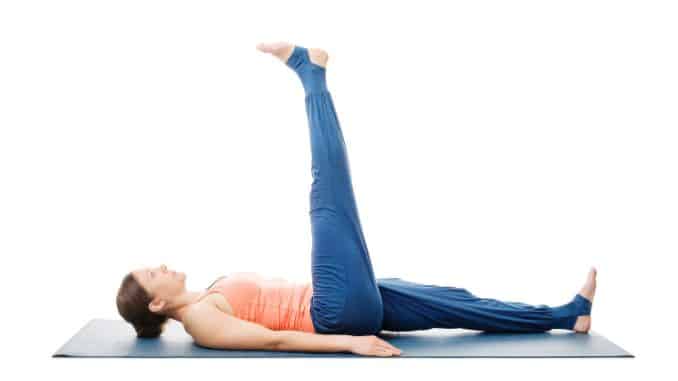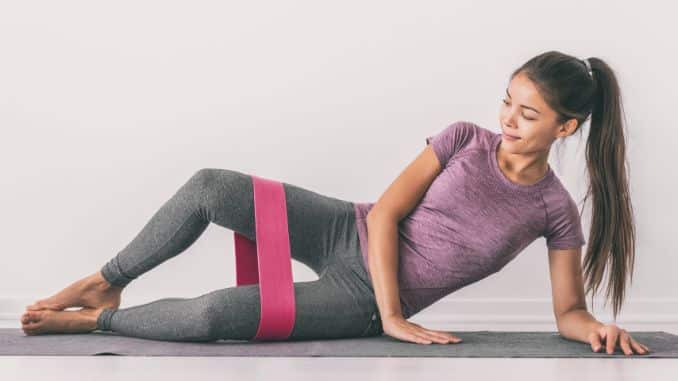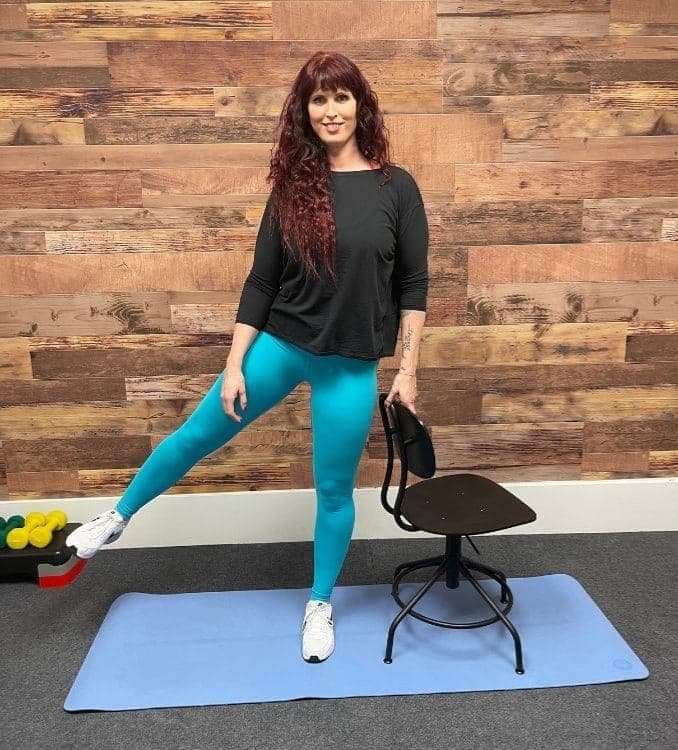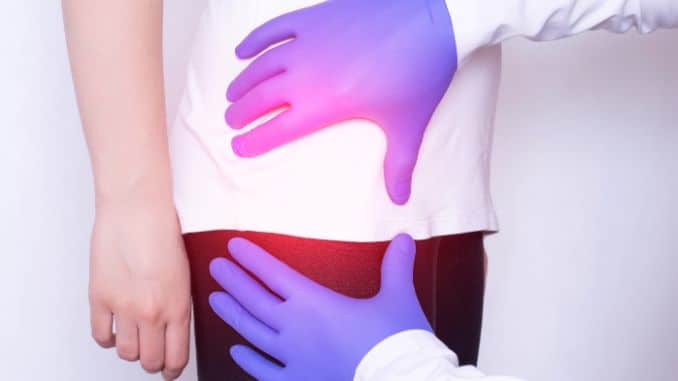
Hip bursitis is typically the result of inflammation and irritation in one of two major bursae in the hip. Hip bursitis is when the bursa surrounding your hip joint becomes inflamed.
A bursa is a small, fluid-filled sac that provides a cushion between bones and soft tissues such as tendons and muscles. Mainly, it helps reduce the friction around joints and enables pain-free movement. There is plenty of bursa in a body, but in the hip alone, there are 2 major bursae.
One covers the body point of the hip bone (greater trochanter). Hence the inflammation of this bursa is known as trochanteric bursitis.
The other is the iliopsoas bursa, located on the hip’s inside or groin side. Inflammation of this bursa is called Iliopsoas bursitis, although this is less common than trochanteric bursitis.
What Causes Hip Bursitis?
Certain positions, motions, or diseases can cause friction or stress on the bursa and lead to bursitis. When the bursa becomes injured, muscles and tendons do not glide smoothly, which can result in pain.
Mainly, hip bursitis develops due to repeated irritation in the hip. It seldom results from a single injury. Hip bursitis can be caused by the following:
- Repeated motions that irritate the bursa, such as walking, running on hills, uneven surfaces, or stair climbing.
- Abnormal walking due to injury, leg length differences, or problems in the spine.
- Muscle weakness
- Incorrect posture
- Hip surgery or replacement
- Bone spurs in the hip
- Infection
- Autoimmune diseases like rheumatoid arthritis, gout, psoriasis, or thyroid disease.
- Direct trauma, such as falling directly on the hips.
Hip Bursitis Signs & Symptoms:
The most common symptom of hip bursitis is hip pain, classified as sharp and shooting or a dull ache. If bursitis affects the hip’s trochanteric bursa, pain is felt at the outside of the hip, where the upper thigh curves out. If the hip’s iliopsoas bursa is affected, the pain will be felt in the groin.
In the absence of a fall or other trauma, the pain from hip bursitis usually appears gradually. If the pain is left untreated, it can progress into these additional symptoms:
- Hip tenderness
- Radiating pain
- Pain that is worse with repetitive activity
- Pain that is worse after prolonged inactivity
- Pain at the extreme range of motion
Swelling and skin redness are less common in hip bursitis, especially aseptic bursitis. The bursa in the hips is located below layers of fat, muscle, and other soft tissues.
Hip Bursitis Treatment
Treatment for hip bursitis will depend on the type of bursitis, but its primary goal is to decrease inflammation.
In cases of septic bursitis, a type of bursitis with an infection in the bursa, it can be treated with antibiotics to prevent the spread of infection.
Aseptic bursitis can be treated with conservative techniques, and surgery is only prescribed if the symptoms don’t improve.
Here are some home remedies that you can initiate to promote pain relief:
1. Rest
Resting your hip joint can give it time to heal on its own. An assistive device like a walker, crutches, or cane can also help you provide less weight on the affected hip.
2. Ice
Applying ice on your hips can help reduce the pain and inflammation. Ideally, you should apply this for 10-15 minutes once or twice daily to help decrease the swelling.
3. Pain Medications
Particularly non-steroidal anti-inflammatory drugs (NSAIDs) can help reduce the inflammation and pain associated with hip bursitis. You can purchase NSAIDs over the counter and follow their prescribed dosage.
When these remedies don’t help relieve your symptoms, the best thing to do is to consult your doctor so they can assess the severity of your hip bursitis and recommend more appropriate management.
They can perform a Corticosteroid injection and a local anesthetic on your hips to promote temporary relief that may last for months or permanent relief if you incorporate activity modifications.
It is important to wait until all hip bursitis symptoms are gone before resuming regular activities; this way, you will lessen the friction or stress on the bursa and hasten its healing, preventing the symptoms from flaring up again.
Home Hip Bursitis Exercises
Hip bursitis exercises can help prevent the occurrence of hip bursitis. Strengthening your thighs can help add stability to the hip joints and protect it from injury.
Here are some hip bursitis exercises that you can do:
1. Hip Bridges
- Lie on your back with your knees bent and your feet flat on the floor or bed, relaxing your upper body. Extend your arms out to the sides.
- Contract your abdominal area and tilt your pelvis down, lifting your tailbone off the floor.
- Push from your heels to lift your hips, squeezing your glutes at the end position.
- Hold this position for 10 seconds and then slowly return to the starting position.
- Do this hip bursitis exercise for one set of 3 repetitions with a 10-second hold.
2. Lying Straight Leg
- Bend one of your legs and feet flat on the bed. Raise the other leg (about 12 inches), keeping your knee straight.
- Work up to holding for 5 seconds. Slowly lower your leg down and relax. If you cannot do this hip bursitis exercise lying down, you can also do it standing up.
- Do the same on the opposite leg. Do this for one set of 5 repetitions per leg.
3. Clamshell Hip Bursitis Exercise
- Lie on your side with one arm overhead and your head resting on your arm.
- Straighten out your legs, and then bend your knees.
- Lift one knee, pause and squeeze at the top, and slowly bring it back down and repeat the movement.
- Do this hip bursitis exercise 5 repetitions of 1 set. You can progress this to 10 repetitions by adding bands around your thigh.
4. Figure 4 Stretch
- Lie on your back with your knees bent and feet flat on the bed, relaxing the upper body and shoulders.
- Cross one ankle over the opposite knee, then brings both knees toward you by grabbing the lower leg with your hands.
- Pull the knees closer to you to intensify the stretch. Hold this position for 15 seconds. Return to the starting position and repeat the movement of the opposite leg.
- Do this for one set of 3 repetitions with 15 seconds of hold per leg.
5. Standing Lateral Leg Raise
- Begin in an upright standing position with your legs shoulder-width apart, maintaining good alignment with your head, shoulders, hips, and legs.
- Place one hand on the back of a chair for support and your other hand on your hip.
- Engage your core and lift one leg out to the side.
- Lower your leg to the starting position and repeat the movement. Do this for 1 set of 5 repetitions per leg.
Outlook
Hip bursitis can be debilitating due to the dull aching pain in the hip joint. Still, this condition can be resolved within three to six weeks with noninvasive treatment such as rest, ice, and activity modification.
Additionally, we recommend that you incorporate the correct hip bursitis exercises that can strengthen your thigh muscles and add stability to your hip joint.
However, suppose your pain didn’t subside despite doing these remedies and modifying your activity by avoiding the repetitive hip motions that exacerbate your pain. In that case, it’s advisable to consult a doctor so they can assess the severity of your bursitis and prescribe other treatment options such as corticosteroid injection or, in severe cases, surgery.

